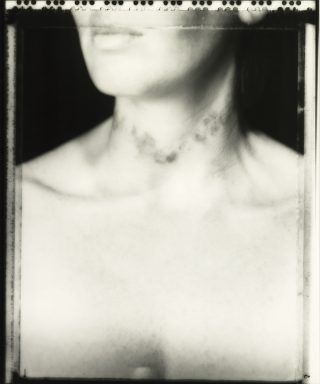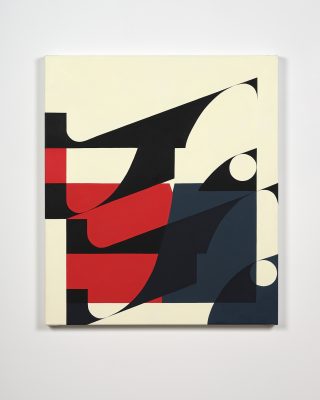It’s not about making the best thing, it’s about that process of learning, of having a conversation with someone who knows what they’re doing.[1]
—Daegan Wells
Truth be told, I do not know what a bush coat is. I picture something akin to a Swanndri. Heavy cloth, with squares of saturated colour neat as pastureland seen from the sky. The sort of jacket that I imagine might be worn by a character in a Barry Crump story—not that I can recall ever having read one. In any case, when Daegan Wells speaks of the departure point for his exhibition, Bush coat, I have no difficulty understanding where he is coming from. He describes his infant self clad in the coat, a garment made by his grandmother, Penny. Wool from her own sheep spun and woven by hand. Stiff fabric snapping his wee arms straight. The scratchiness of it, wool being fundamentally practical. Which is not to say that the coat was not comforting as well. If one of the typical qualities of crafted objects is utility (art turned to use makes craft), another is surely reassurance. Handmade things convey care from maker to user. The situation is more pronounced when the user is a child and the maker an elder. When Penny gave Daegan the bush coat, she was cherishing him, both because the garment would protect him—keep him warm, if not always dry—and because it enfolded her love-labour. Hours in the spinning of the thread. Hours in the making of the cloth. Hours in the piecing together and finishing. All that time adding up to an entity with a relatively short use-life (since little people do not stay little), but a long memory.
At my childhood home, in suburban Tāmaki Makaurau, there is a camphor box. I knew the name of it long before I had any notion of what camphor was. Old habit: I tend to slur the words together, pronounce them as one. A camphorbox is where old clothes live. The one at my parents’ place is ornately carved. It must be a terrible trap for dust. Inside, there are tiny cardigans in pale colours. Jerseys with lively stripes on. Things made by relations now passed, and largely, by me, forgotten. The assumption is that the bits and pieces will have another life one day. Other babies will come along to wear them, and, in a process at once deeply sensible and deeply poetic, generations that have never met will be tied together. I picture crepe-skinned but dextrous hands threading peach ribbon through almost-the-same-peach knitted booties. Truth be told, I do not know who made them. My Akaroa grandmother or one of her sisters? Whoever it was likely was not so very old. Let us revise the image then. The hands can be younger. They remain dextrous. Perhaps one day my partner and I will decide to circumvent our homosexuality and find a way of having children. It occurs to me that I am today the same age my father was when I was born, almost to the month. I am late to the party. I might never arrive. What to do with the woollens. …
*
Essay commissioned by Enjoy as a response to the exhibition Bush coat. Continue reading on the Enjoy website.
Bush coat
Daegan Wells
31 July to 12 September 2020
Enjoy
Te Whanganui-a-Tara Wellington
[1] Lucinda Bennett, “A Frost Kissed Rose at the Bottom of the World: An Interview with Daegan Wells,” The Pantograph Punch, 6 August, 2018, https://www.pantograph-punch.com/posts/daegan-wells.




